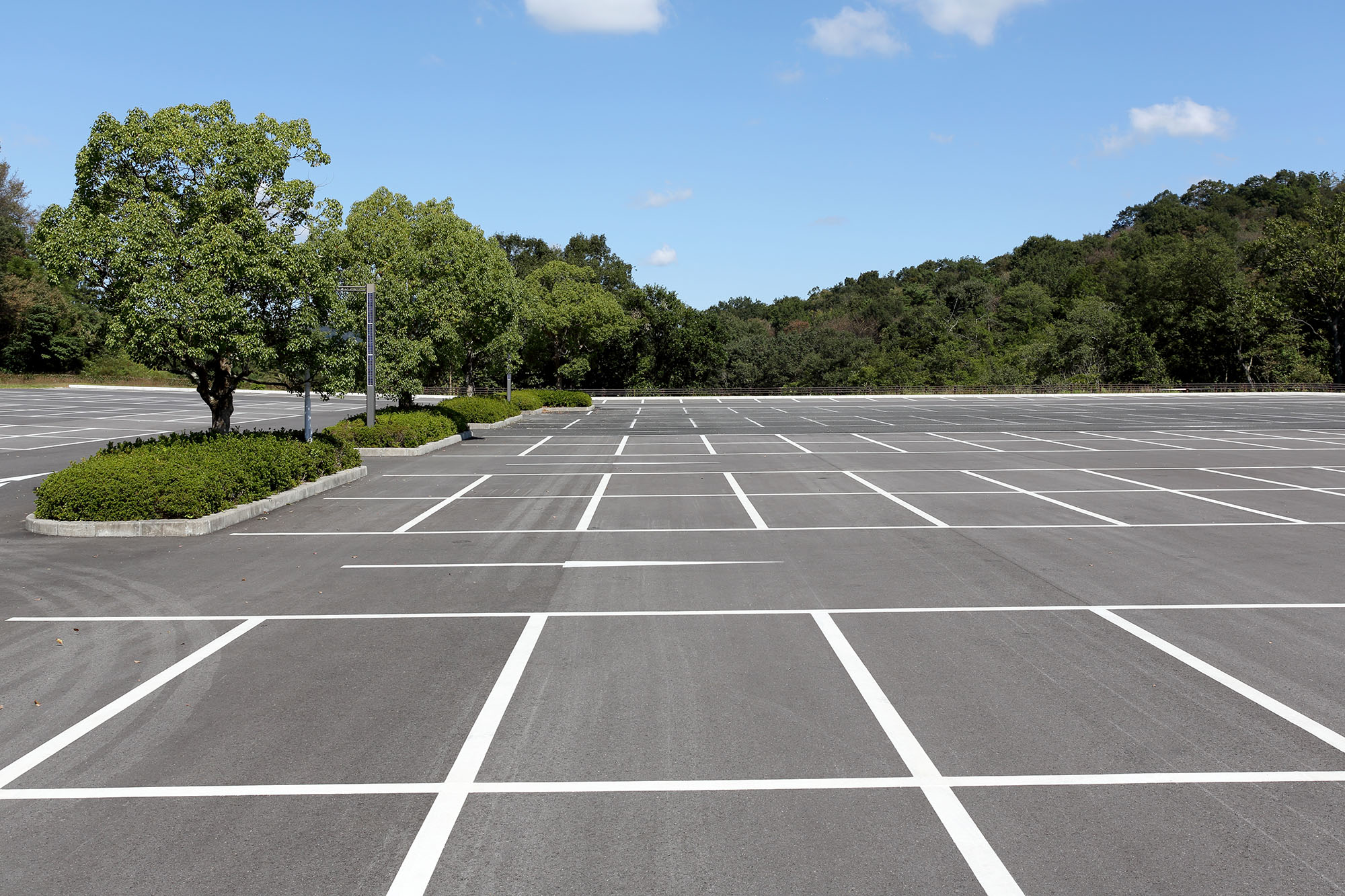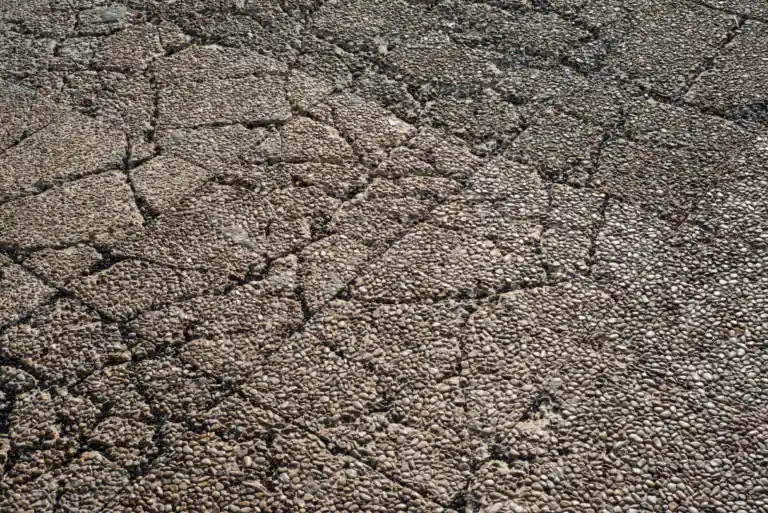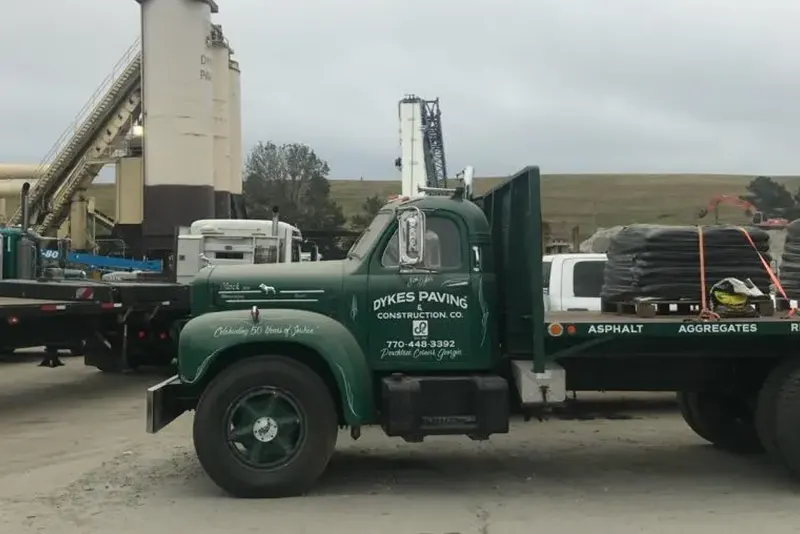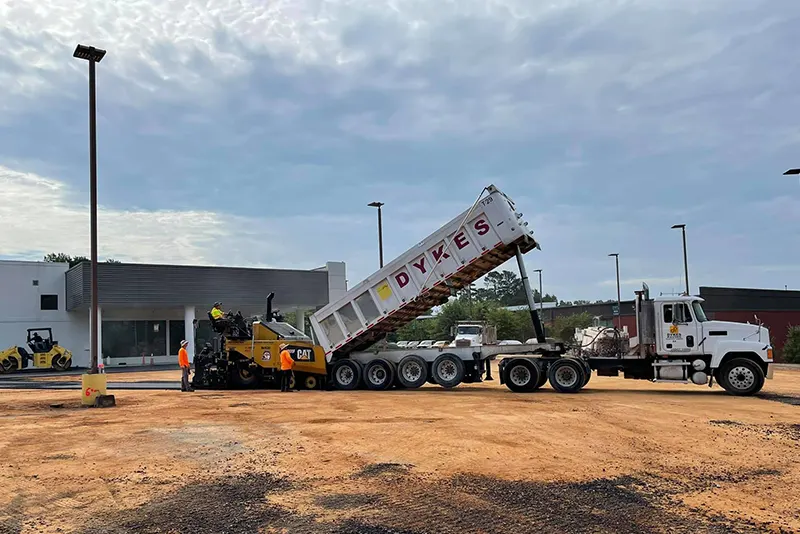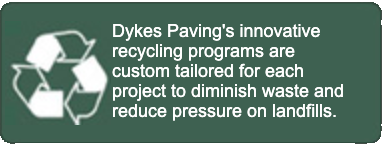When building or repairing a parking lot, drainage is a critical issue. An improperly paved lot that leaves pools of standing water after a rain can result in problems for drivers and pedestrians as well as for the businesses that rely on the lot.
Water allowed to stand for lengths of time in one place will eventually find a way to the subsoil. Working with oxygen and UV rays, the combination will begin to cause cracks in the pavement and the water will seep through. Eventually this will weaken the soil foundation beneath, thus causing more damage to the pavement.
Three things happen to water on a parking lot surface. Some water is absorbed, some evaporates and the rest will flow from high points to low points, if possible. Ideally the flow from high to low takes the form of “sheeting”, which is a wide film of water flowing to a low point. If the water reaches a level point, this sheet of water may result in a pool. According to one source, the Virginia Asphalt Association, paved surfaces in a parking lot should have a slope between 2% and 5% to drain adequately. A 1% slope is generally recommended as a minimum.
Also large areas of standing water create a safety hazard for cars and pedestrians. For businesses that rely on the parking lot, the financial impact can be enormous.
And widespread damage to the pavement, when neglected, can mean a significant repair expense for the parking lot owner.
The main objective for the paving company is to create a strategy to move all water to storm sewers, culverts or other channels and away from the parking lot surface as quickly as possible. This will result in a longer life for the lot and lower cost of maintenance for the owner.
Besides protecting against rainfall, the designer must also consider runoff from irrigation sprinkler systems often placed in parking lot islands.
According to the website, there are three principal means to prevent water accumulation and infiltration in parking lots. These are:
- Impermeable HMA (Hot Mix Asphalt) is properly compacted to minimize air voids. If the smallest crack should appear, it should be completely repaired.
- Slope, as mentioned already, should quickly allow water to sheet flow to a drain or other construction to carry the water away.
- Grade of curbs or gutters must be designed to bring all the water to a central collection point such as a detention pond or catch basin. A generally accepted minimum standard grade is 0.5 percent.
Environmental concerns are a consideration. The water channeled from the parking lot must minimize any effect on the natural balance of the area and avoid any negative impact on surrounding properties.
Localized areas of pooling can be fixed without exacting enormous cost. Dykes Paving uses a unique technique called “asphalt skin patching”. As long as the subsurface has not been damaged, Dykes can employ a three step process which covers any damage and raises the level of the area to facilitate drainage. The three steps are:
- Clean and apply a tack coat for adhesion
- Apply a new coat of asphalt and fix with a vibrating compactor.
- Feather or blend the edges to create a smooth service with the existing pavement.
Whether you are installing a new surface or repairing an old one, Dykes Paving has over 45 years of experience to back up the promise of a professional, attractive and long-lasting job. They understand potential problems with every paving situation and know how to avoid them.

